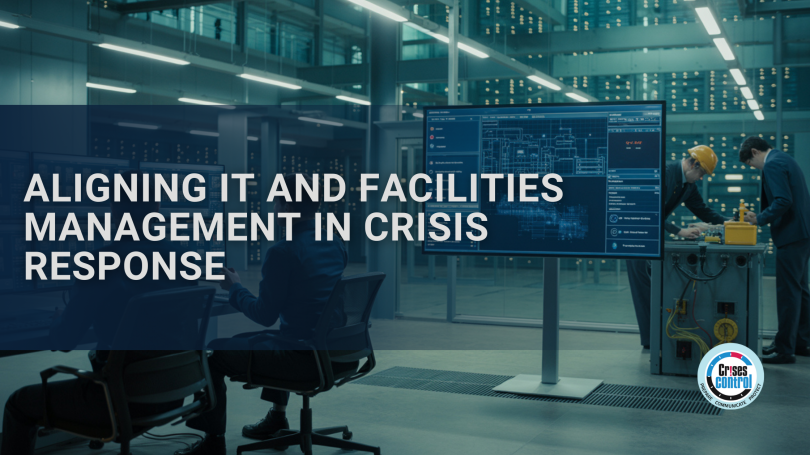Imagine that a severe power outage strikes your organisation’s headquarters. Chaos ensues as employees scramble in the dimly lit corridors, struggling to find their way to safety. IT personnel are racing against time to recover critical systems, while Facilities Management works on restoring power. In this dire situation, the key to a swift and effective response lies in the seamless collaboration between these two essential departments. This blog explores the vital role of IT and Facilities Management in crisis response and how their alignment, aided by mass notification systems and incident management tools, can transform incident resolution.
The Crucial Roles of IT and Facilities Management
Before delving into the collaborative aspects, it’s imperative to understand the distinct roles these two departments play during a crisis:
IT Department
- System Resilience: IT teams are responsible for ensuring the resilience of digital systems. They maintain critical infrastructure, cybersecurity, and data integrity.
- Communication Infrastructure: IT professionals manage communication networks, enabling connectivity for employees to receive critical updates during incidents. Incorporating redundant communication channels and robust data networks ensures that employees receive critical updates promptly and consistently.
- Data Recovery: In the event of data loss, IT specialists initiate recovery protocols to minimise downtime and data loss.
- Cybersecurity: Protecting against cyber threats is paramount. IT personnel shield the organisation’s digital assets from breaches and attacks.
Facilities Management
- Physical Infrastructure: Facilities teams oversee the physical aspects of crisis response, including the maintenance of buildings, power supply, and workplace safety.
- Occupant Safety: Ensuring the safety and well-being of occupants is their top priority. This includes evacuation procedures, first aid, and emergency supplies.
- Resource Management: Facilities Management coordinates resources such as generators, backup power supplies, and physical security to support crisis response efforts.
- Environmental Considerations: Managing environmental factors like air quality and temperature control can be critical in some situations.
Collaboration for Enhanced Crisis Response
The strength of crisis response lies in the collaboration between IT and Facilities Management. Here’s how their synergy can elevate incident resolution:
Coordinated Incident Management
IT teams can swiftly identify digital infrastructure issues, while Facilities Management addresses physical concerns. This collaborative approach ensures a comprehensive incident response.
Utilising incident management tools enables both departments to work from a unified platform, streamlining incident tracking and resolution.
Effective Communication
Mass Notification Systems (MNS) platforms facilitate real-time communication. IT can convey system status updates, while Facilities Management shares information on building conditions and safety measures. Integration of MNS with incident management tools ensures that notifications are synchronised with the incident response process.
Resource Allocation
Facilities Management can provide crucial resources such as backup power and safe shelter, supporting IT’s efforts to maintain system functionality. Incident management tools enable the allocation and tracking of resources, ensuring efficient resource management during crises.
Scenario Planning
Collaborative scenario planning exercises prepare both departments for various crisis scenarios. This proactive approach enhances their ability to respond effectively when an incident occurs.
Rapid Decision-Making
With a clear understanding of each department’s responsibilities and access to real-time data, IT and Facilities Management can make rapid and informed decisions during a crisis.
Conclusion
In the landscape of crisis response, IT and Facilities Management are indispensable. Their collaborative efforts, enhanced by mass notification systems and incident management tools, enable organisations to navigate crises with resilience and efficiency. It’s not merely a convergence of departments but a synergy of expertise and resources, ensuring a safer and more secure environment for all.
Ready to empower your organisation’s crisis response with mass notification systems and incident management tools? Request a live demo or connect with our experts at Crises Control. Your journey to enhanced incident resolution begins here with Crises Control.







